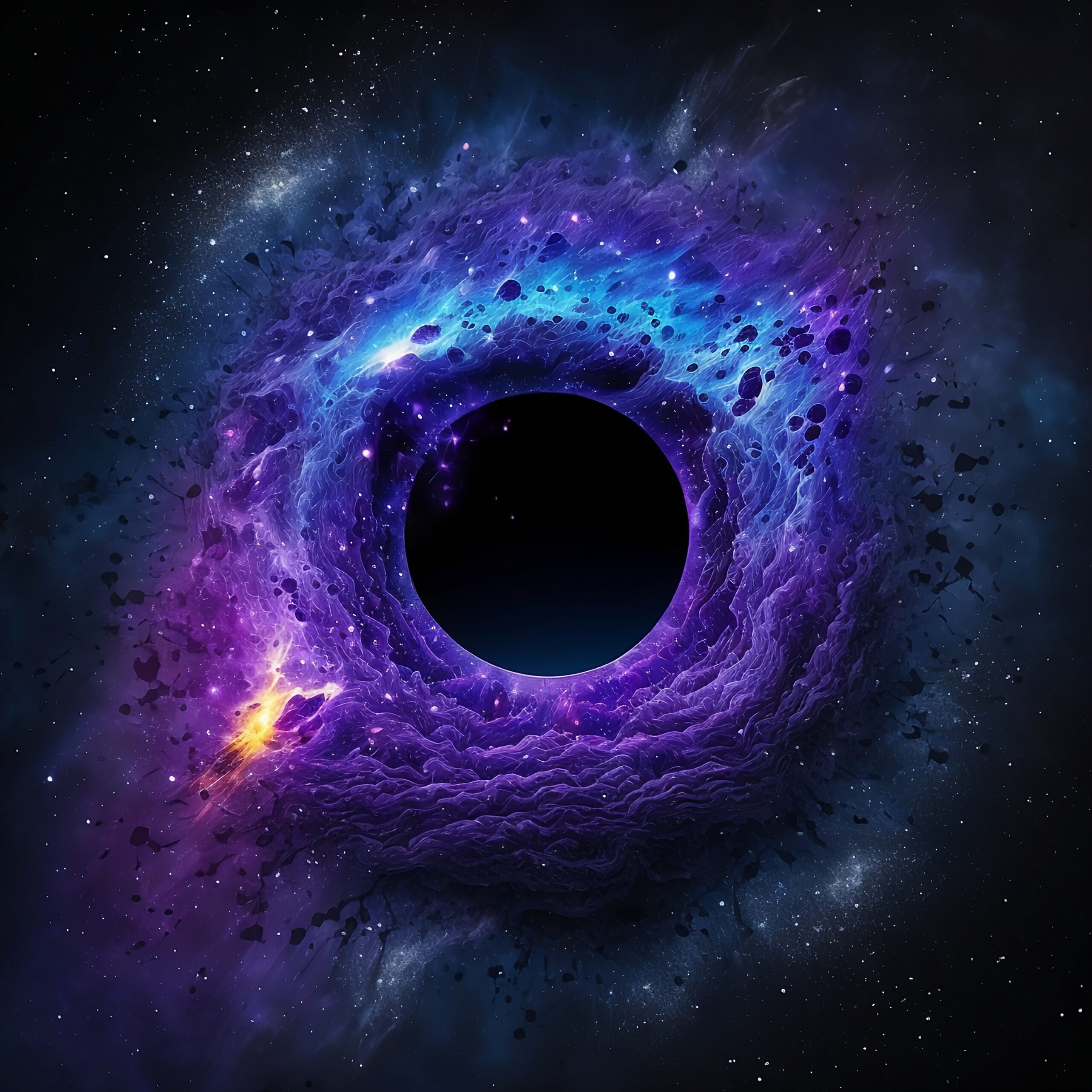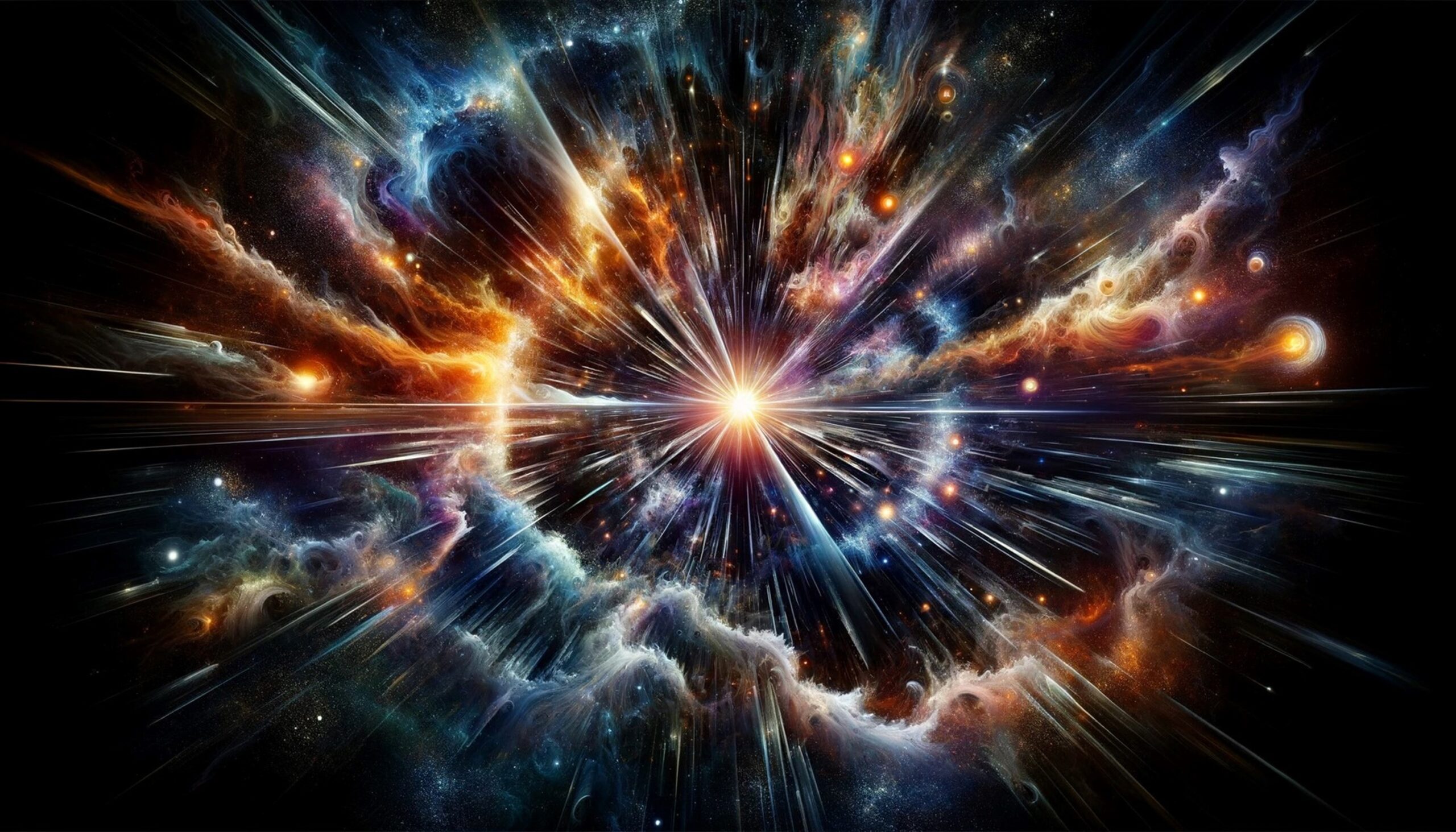Introduction
Black holes are like cosmic giants with an unstoppable gravitational pull, even trapping light. But have you ever wondered how big they can get? Can they keep growing forever, or does the universe have a way to stop them?
Black holes are some of the universe’s most fascinating and powerful things. They form when massive stars collapse or dense objects collide, creating areas in space where nothing—not even light—can escape. Even though scientists have been studying them for years, there’s still so much we don’t know. One big question is: how massive can a black hole become?
In this blog, we’ll explore the possible limits to how large black holes can grow. We’ll look at the latest discoveries, and theories, and how advanced telescopes are helping us understand these cosmic mysteries better than ever.
What Are Black Holes and How Do They Grow?
What Are Black Holes?
Black holes are areas in space where gravity is so strong that nothing—not even light—can escape. They form when massive stars run out of fuel and collapse under their weight, squeezing all their matter into a tiny, incredibly dense point called a singularity. Around the singularity is the event horizon, a boundary where anything crossing it is lost forever.
How Do Black Holes Grow?
Black holes grow in two main ways:
Eating Nearby Matter (Accretion):
Black holes “feed” on nearby gas, dust, or even stars. This material spirals toward the black hole, creating a glowing accretion disk as it heats up from friction before disappearing into the event horizon.
Merging with Other Black Holes:
Sometimes, two black holes collide and combine into a single, larger black hole. These collisions release huge amounts of energy as gravitational waves—ripples in the fabric of space-time that can travel across the universe.
Types of Black Holes:
Black holes come in different sizes, and they’re grouped into three main categories:
Stellar Black Holes:
These are the smallest and most common types. They form when massive stars collapse and usually weigh 5 to 50 times the mass of our Sun.
Intermediate Black Holes:
These are rarer and sit between small and giant black holes. They weigh between 100 and 100,000 times the Sun’s mass. Scientists think they form by merging smaller black holes or from dense star clusters.
Supermassive Black Holes:
These are the giants at the center of most galaxies, including the Milky Way. They weigh millions to billions of times more than the Sun and grow slowly over billions of years by feeding and merging.
By understanding what black holes are, how they grow, and the different types, we get closer to unlocking their mysteries and figuring out their limits.
The Idea of an Upper Limit
Why This Matters
Black holes are some of the most mysterious and powerful objects in the universe. Figuring out if there’s a limit to how big they can grow is important for understanding how the universe evolves, how galaxies form, and what happens to matter over time. If black holes could grow endlessly, they might take over galaxies, stop new stars from forming, and completely change the structure of the universe.
What Could Limit Their Growth?
Even though black holes are known for their ability to “eat” anything nearby, scientists think there might be limits to how much they can grow. Here are some reasons why:
A Limited Supply of Matter
Black holes need to consume gas, dust, and stars to grow. But the universe only has a finite amount of this material. In areas where black holes have already consumed most of the matter, there might not be enough left to fuel further growth. Over billions of years, they could essentially run out of “food.”
Self-Limiting Growth (Feedback Mechanisms)
Black holes don’t just take in energy—they also release it. For example, when a black hole is actively feeding and becomes a quasar, it shoots out powerful jets of energy and radiation. This energy can heat or push away nearby gas, cutting off the black hole’s fuel supply. It’s a natural balancing act, like a balloon only inflating to a certain point before the pressure stabilizes it.
Physics Sets Limits (Relativistic and Thermodynamic Effects)
As black holes get bigger, the physics of the universe itself might impose restrictions. For instance, the energy released when a black hole eats matter could become so strong that it prevents more matter from falling in. Relativistic and thermodynamic principles might work together to put a cap on their growth.
An Analogy to Understand This
Think of a black hole as a super-powerful vacuum cleaner. At first, it efficiently sucks up everything nearby. But as it grows, the surrounding area becomes “cleaner,” and there’s less debris to pull in. Also, like a balloon, a black hole may reach a size where natural forces prevent it from growing further.
What We’ve Observed So Far
These ideas aren’t just theoretical. Scientists have observed black holes that stop growing under certain conditions, which supports the idea of an upper limit. By studying these limits, we can better understand the laws that govern the universe and its ultimate boundaries.
Recent Discoveries and Observations
Key Findings
Recent discoveries have shown black holes that are much larger than we ever imagined. One example is TON 618, an ultra-massive black hole with a mass 66 billion times that of the Sun. Found in a faraway quasar, TON 618 challenges our understanding of how such huge black holes form and grow over time.
Astronomers have also found other black holes that weigh over 10 billion times the mass of the Sun. These supermassive black holes are often found at the centers of ancient, large galaxies, where conditions in the early universe may have helped them grow quickly. Some of these black holes might be close to reaching their maximum size, but it’s hard to study exactly how they grow.
Evidence for Limits on Growth
There’s also evidence suggesting that even the largest black holes have limits. For example, studies of quasars—black holes that are actively feeding—show that their strong energy output can stop them from growing further. These energy bursts, called quasar winds, match what scientists expect based on theories about natural growth limits.
Tools and Methods Used to Study Black Holes
New technology is helping scientists study black holes in ways we couldn’t before:
Gravitational Wave Detectors (LIGO and Virgo):
These detectors help us understand black hole mergers by picking up ripples in space-time caused by them. These events offer clues about how black holes form and grow.
Theoretical Implications
Astrophysical Impacts
If a black hole were to reach or surpass its theoretical mass limit, it could have major effects on its galaxy:
Disruption of Star Formation
As black holes grow, they release energy through powerful winds and jets. This energy can heat up or blow away the gas and dust needed to form new stars. If a black hole gets too big, it might stop star formation in the entire galaxy, leaving it full of old, fading stars.
Gravitational Dominance
A black hole that exceeds its limit could upset the delicate balance of gravity in its galaxy. It could pull stars and gas toward itself, changing the galaxy’s shape and structure. This might lead to extreme phenomena like very bright quasars or even a black hole consuming the entire center of the galaxy.
Accretion Efficiency Breakdown
As black holes grow larger, the process by which they feed (accretion) might slow down. At extremely large sizes, they could stop growing steadily, instead releasing bursts of radiation and matter.
Challenges to Existing Models
Finding black holes that are much larger than scientists thought possible would force researchers to rethink some basic ideas in astrophysics:
Revising Growth Models
Scientists currently believe black holes grow by feeding on nearby matter (accretion) or merging with other black holes, limited by available material and feedback effects. If we discover black holes much bigger than expected, it could mean there are other growth processes or conditions, like unknown types of matter or early-universe events that help them grow.
Implications for Cosmic Evolution
Supermassive black holes play a key role in shaping galaxies and regulating star formation. If black holes can grow bigger than expected, it might change how we understand their impact on galaxies and the entire universe. This could require us to adjust our models of how the universe evolved.
Exploring Physics Beyond General Relativity
Black holes near or beyond their size limits might challenge Einstein’s theory of general relativity. Their extreme gravity could reveal new aspects of physics, like quantum gravity, or provide clues for new theories of gravity.
In short, discovering black holes that exceed current size limits would force scientists to rethink the basics of astrophysics. These enormous black holes aren’t just passive objects in the universe—they play an active role in shaping the cosmos.
Conclusion
Black holes are some of the most intriguing and powerful objects in the universe. They grow by consuming matter and merging with other black holes, shaping galaxies and influencing how the universe evolves. However, their growth seems to have natural limits due to the limited amount of matter, feedback effects, and the laws of physics.
Recent discoveries, like the ultra-massive black hole TON 618, have pushed our understanding further, suggesting that some black holes may be close to their maximum size. These findings challenge existing theories and raise questions about the true limits of these cosmic giants and their role in shaping the universe.
As we continue exploring space with tools like gravitational wave detectors and advanced telescopes, one big question remains: Could we find a black hole so massive that it forces us to rethink the laws of physics and our understanding of the universe itself?
Share the knowledge with

